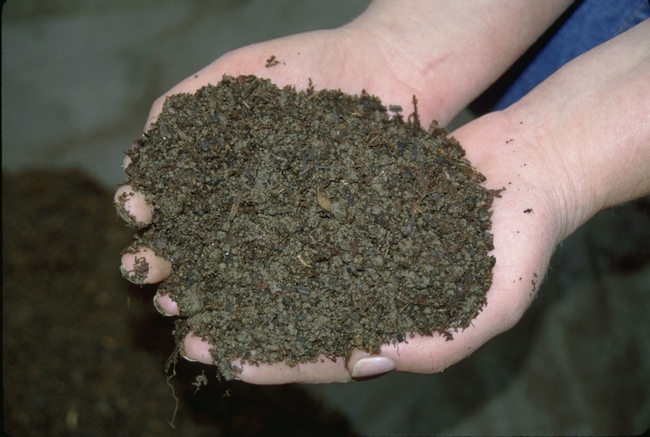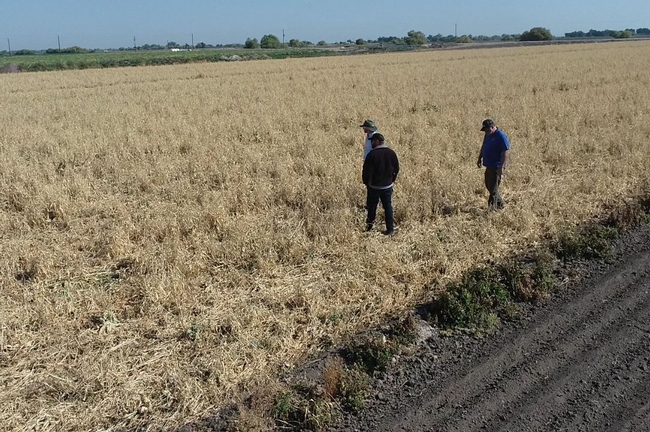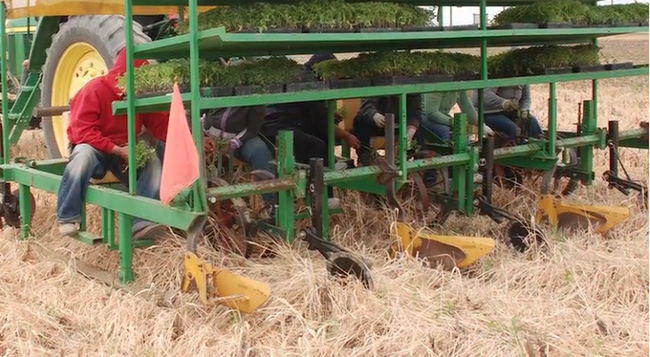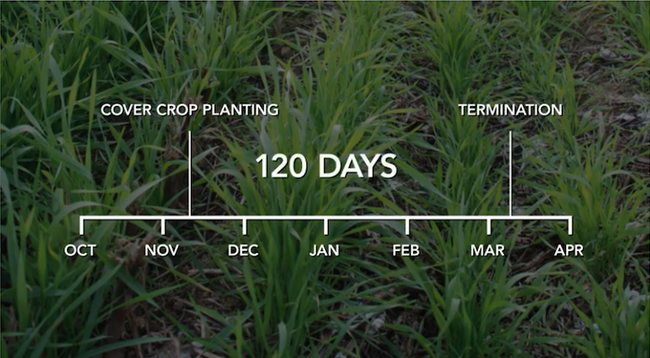Posts Tagged: soil
Franco: Deciphering Soil Macrobiome and Ecosystem Responses to Global Change
It promises to be an outstanding seminar. André Custodio Franco, assistant professor, Indiana University, Bloomington, will speak on...

What's up with soil and global change? Andre Franco of Indiana University will speak on "Deciphering the Soil Macrobiome: Belowground Communities Driving Ecosystem Responses to Global Change" at 4:10 p.m., Monday, Nov. 18 in 122 Briggs Hall. It also will be on Zoom and then archived. (Photo by Kathy Keatley Garvey)
Zeroing in on Soil Invertebrate Communities
You might call it earth-shattering, but better, "an eye-opener about soil compositions." Associate professor Kyle Wickings of the Department of...
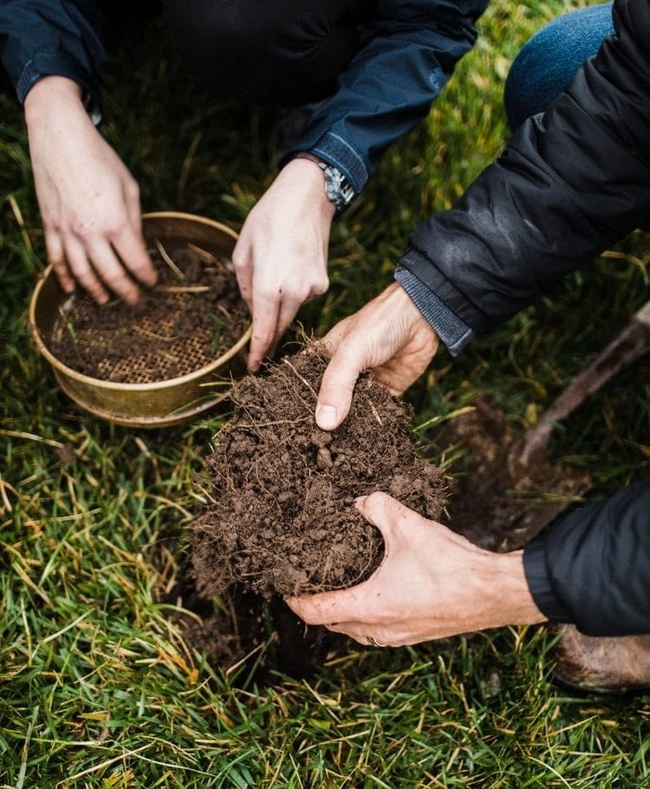
This is an image from Kyle Wickings' soil arthropod ecology lab at Cornell University.
Celebrate Healthy Soils Week with free events Dec. 5-9
California Healthy Soils Week 2022 kicks off Dec. 5 on United Nations' World Soil Day. UC Agriculture and Natural Resources is joining the California Department of Food and Agriculture and other organizations in highlighting the benefits of soil health and biodiversity.
During the week of Dec. 5-9, CDFA will present a biodiversity webinar, the UC Master Gardener Program will host two Facebook LIVE webinars and UC Cooperative Extension will co-host a Sustainable Nutrient Management & Soil Health Field Day in Salinas. Details about the free events are below.
Monday, Dec. 5 at 10 a.m.
WEBINAR: Building Belowground Biodiversity CDFA Secretary Karen Ross and members of the Belowground Biodiversity Advisory Committee – composed of world-renowned scientists – discuss how soil biodiversity may impact soil health. The BBAC is tasked with preparing a report of their recommendations on biodiversity indicators as a proxy of soil health and ecosystem functions. This webinar will discuss the importance and impact of belowground biodiversity on soil health and presenters will also share some of their research findings. Register at https://us02web.zoom.us/webinar/register/WN_Jy4iuXb4TyydYcLXTcfThw.
Tuesday, Dec. 6 at 10 a.m.
Healthy Soil: In nature sometimes less is more. Understanding the nature and composition of soil is the first step in our understanding of how to achieve sustainable, healthy soil in our gardens. Mike Corby, UC Master Gardener volunteer in Contra Costa County, will give tips for improving soil health in the garden. To join this 30-minute UC Master Gardener Program LIVE on Facebook, go to https://fb.me/e/4tavSVutB on Dec. 6 at 10 a.m. No registration is required. A recording of the webinar is published on YouTube at https://youtu.be/Y9M5uQtzLyk.
Wednesday, Dec. 7, at 10 a.m.
Harnessing the Magic of the Soil Food Web: Turning Dirt into Gold. Soil is the foundation for life providing habitat, recycling wastes and toxins, providing structural and nutritional support for plants. Over the past 150 years, more industrial practices have replaced natural methods that degrade soil structure and degrade populations of soil organisms, weakening the natural control of soil borne diseases and pests. This has contributed to a reliance on the use of chemical fertilizers, insecticides and herbicides. These chemicals not only affect the soil, but the biodiversity of organisms that rely on the soil and the plants that grow in it. Nurturing soil is one of the best things you can do as a gardener. Plants thrive in soil that is teeming with life.
Kit Veerkamp, UC Master Gardener volunteer in El Dorado County, will discuss why this really matters and how to modify your soils to improve plant health and reduce disease and pests. To join this 30-minute UC Master Gardener Program LIVE on Facebook, go to https://fb.me/e/4VJE3wZA1 Dec. 7, at 10 a.m. No registration is required. A recording of the webinar is published on YouTube at https://youtu.be/Hqd-XDy81H0.
Wednesday, Dec. 7, at 11 a.m.
Web Soil Survey Presentation: Hosted by California Natural Resources Conservation Service, the Web Soil Survey provides soil data and information produced by the National Cooperative Soil Survey. It is operated by the USDA Natural Resources Conservation Service (NRCS) and provides access to the largest natural resource information system in the world. NRCS has soil maps and data available online for more than 95% of the nation's counties. Moderated and presented by Phil Smith, California NRCS area resource soil scientist, and Tony Rolfes, California state soil scientist. This is a presentation on Web Soil Survey and other soil web tools for gathering soils information and maps. Register here.
Friday, Dec. 9, at 9 a.m.
Sustainable Nutrient Management & Soil Health Field Day will be held from 9 a.m. to 3 p.m. at the Agricultural Center Conference Room at 1432 Abbott St. in Salinas.
Presentations will include
- Climate-smart nutrient management for cool-season vegetable crop production by Cole Smith, UC Cooperative Extension staff research associate.
- Co-composted biochar application in intensive vegetable rotation: On-farm trial review by Laura Murphy and Sacha Lozano, Monterey and Santa Cruz Resource Conservation Districts
- Latest developments in measuring soil health: The 4 most responsive indicators by Meagan Hynes, California State University - Monterey Bay
- Healthy soil incentives and Ag. Order 4.0 requirements by Monica Barricarte and Claire Bjork, Central Coast Water Board
- Avenues for improving nitrogen cycling in vegetable production by Richard Smith, UC Cooperative Extension vegetable crops advisor
- In-field soil health assessment & compost spreader calibration by Jessica Chiartas, UC Davis
Five Certified Crop Adviser nutrient management continuing-education credits have been requested for attending the Sustainable Nutrient Management & Soil Health Field Day. To register or for more information, visit http://ucanr.edu/2022snmfd.
Visit the Healthy Soils Week website to see the full lineup of events and partners. To find more healthy soils information on social media, look for the hashtags #SoilHealth and #HSW2022.
Soil health in California cotton fields explored in video series
Over a century of growing cotton in California, scientists and farmers have learned how to better manage soil health. To share their collective knowledge, they have produced a series of videos about cultivating better soil health in cotton fields.
At its peak cotton production, California harvested as much as 1.6 million acres of cotton in the late 1970s to early 1980s. Due to water shortages, growers harvested less than 200,000 acres of cotton in 2020.
“Although cotton acreage in California has fallen off in recent years, some rather impressive advances in soil health management in San Joaquin Valley cotton production fields have been achieved in the past couple of years,” said Jeff Mitchell, UC Cooperative Extension specialist, who formed the California Conservation Agriculture Systems Innovation Center with growers and production consultants.
In partnership with the Soil Health Institute of Greensboro, NC, the Conservation Agriculture Systems Innovation Center has released a four-video series on soil health in California cotton production systems (YouTube links below).
“The series of four videos chronicles not only the history of advances in soil health management in San Joaquin Valley cotton systems, but also some major progress that stems from both long-term research and very recent farmer and private sector innovation with new production paradigms,” Mitchell said.
“San Joaquin Valley farmers have done some really impressive work in recent years to improve the ways that they care for the soil in their fields,” Mitchell said.
To improve soil health, growers try to minimize soil disturbance, enhance biological diversity, keep living roots in the soil and cover the soil with plants and plant residue. They experimented with no tillage and cover crops. Researchers found that cotton fields using no tillage and cover crops achieved a higher soil aggregate stability score than standard tillage with or without a cover crop and no till without a cover crop. In no-till fields with cover crops, water infiltrated the soil in seconds rather than minutes.
The soil health videos range in length from 10 minutes to 21 minutes.
The history video traces important contributors and breakthroughs during the 100-plus years that cotton has been grown in California.
The second video features progress at improving soil health made by Cary Crum, formerly of California Ag Solutions of Madera now with Agritechnovation, Inc., and cotton farmers he works with in the San Joaquin Valley.
The third video chronicles the goals and findings of the unique 22-year soil research study that has been underway in Five Points as one of the Soil Health Institute's national program of long-term North American soil health study sites. It shows what is possible when the core soil health principles are implemented consistently in the region.
The fourth video on the importance of soil aggregate stability shows how attention to the dedicated soil health management principles can improve soil structure and overall production efficiency.
One important lesson from the study is that growers must be patient, improvements in the soil occur gradually.
“We did not see changes in many soil health properties or indicators during the first eight or actually 10 years of our study,” Mitchell said.
Videos on soil health in California cotton fields:
Soil health management systems for California cotton: A brief history https://youtu.be/7DWIJ_3QIz8
Recent advances in soil health management in California cotton production systems https://youtu.be/tRWk-d9F1I8
Local research base for soil health management in California cotton production systems https://youtu.be/AdqnsicuGYo
Regenerating soil aggregate stability in California cotton production systems https://youtu.be/K2fsvPTmlF0
Can Calcium Fertilizers Improve Soil Health or Crop Production in Alfalfa?
DIAGNOSING A FIELD PROBLEM Can applications of Calcium (Ca) fertilizers improve plant nutrient uptake or improve soil properties in alfalfa...


